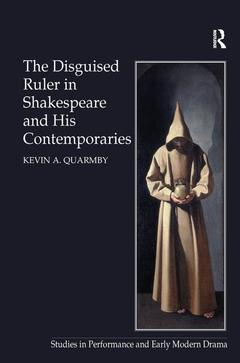Description
The Disguised Ruler in Shakespeare and his Contemporaries
Studies in Performance and Early Modern Drama Series
Author: Quarmby Kevin A.
Language: English
Keywords
drama; queens; revels; pastor; fido; basilikon; doron; friar; bacon; john; Disguised Ruler Drama; Young Men; Il Pastor Fido; Friar Bacon; Queen's Revels; Guarini's Il Pastor Fido; Sir John Oldcastle; Pastor Fido; King's Revels; Antonio's Revenge; Richard III; Basilikon Doron; Guarini's Play; Edward IV; Bartholomew Fair; Robin Hood; Fair Em; Gunpowder Plot Conspirators; Tudor Motif; Law Tricks; Whig Historiography; James's Personality; Jack Drum's Entertainment; Emperor's Son; Queen Henrietta's Men
Approximative price 183.14 €
In Print (Delivery period: 14 days).
Add to cartPublication date: 04-2012
Support: Print on demand
Approximative price 64.97 €
In Print (Delivery period: 14 days).
Add to cartPublication date: 11-2016
· 15.6x23.4 cm · Paperback
Description
/li>Contents
/li>Biography
/li>
Kevin A. Quarmby is Assistant Professor of English at The College of St. Scholastica, Duluth, Minnesota. His prior professional acting career informs his Shakespeare research.
These books may interest you

Writing the Monarch in Jacobean EnglandJonson, Donne, Shakespeare and the Works of King James 109.06 €

Writing the Monarch in Jacobean EnglandJonson, Donne, Shakespeare and the Works of King James 32.87 €

Strangeness in Jacobean Drama 160.25 €

